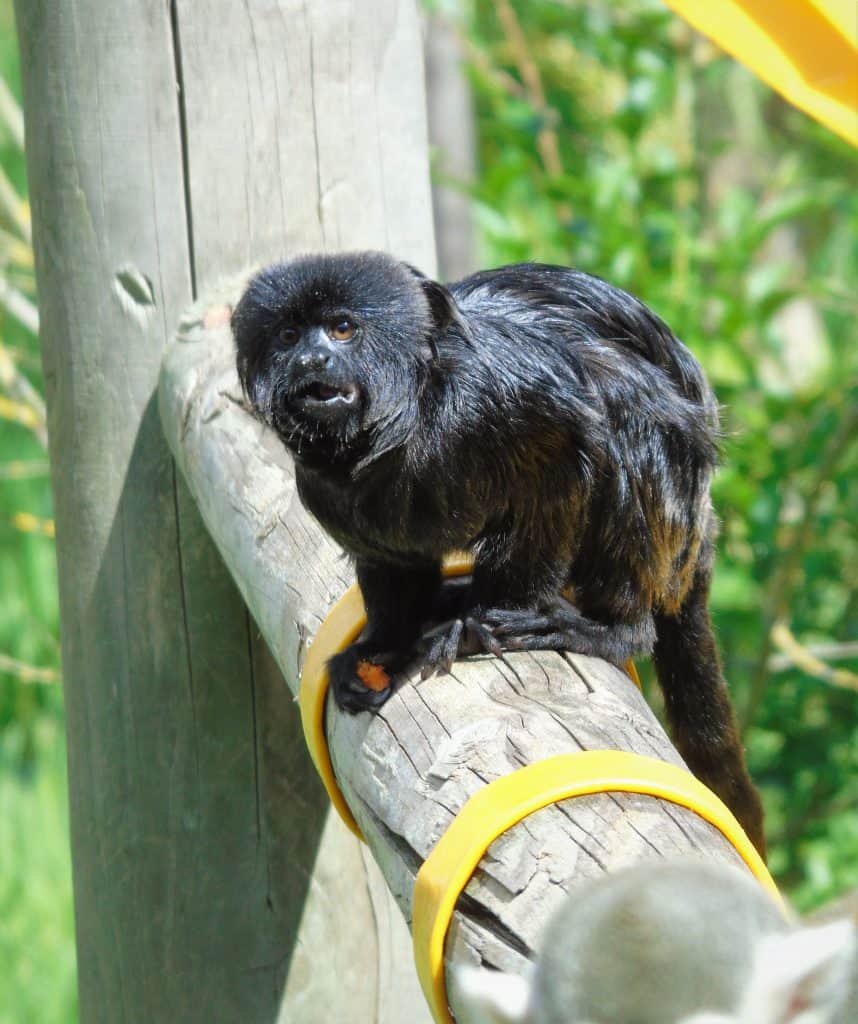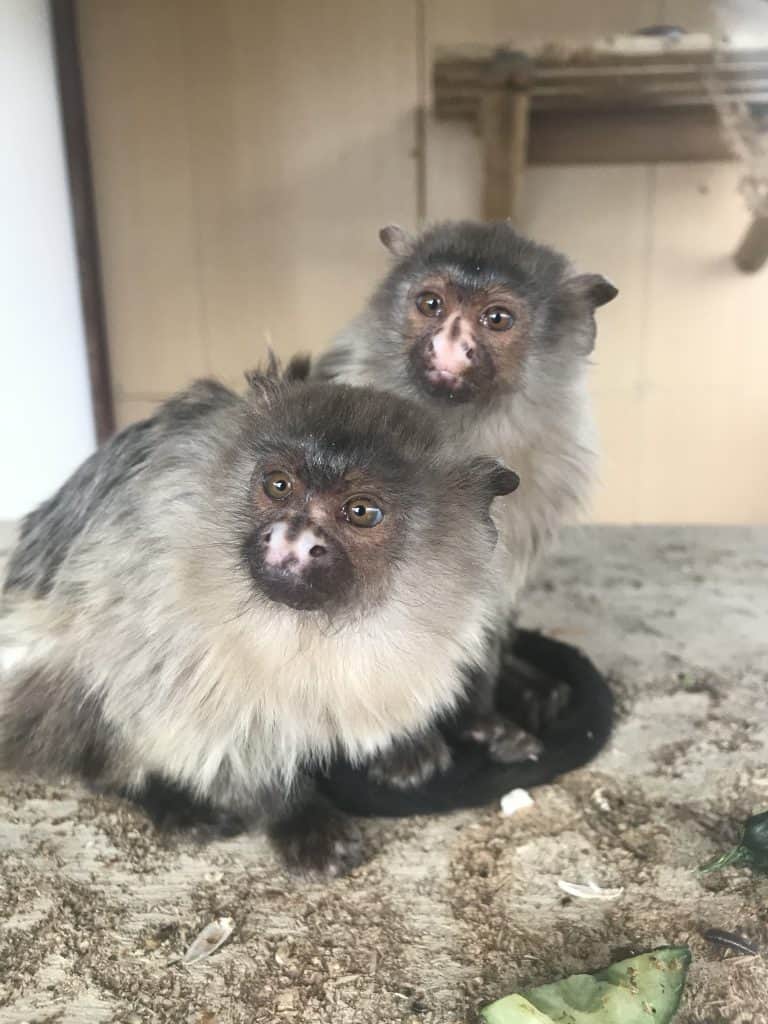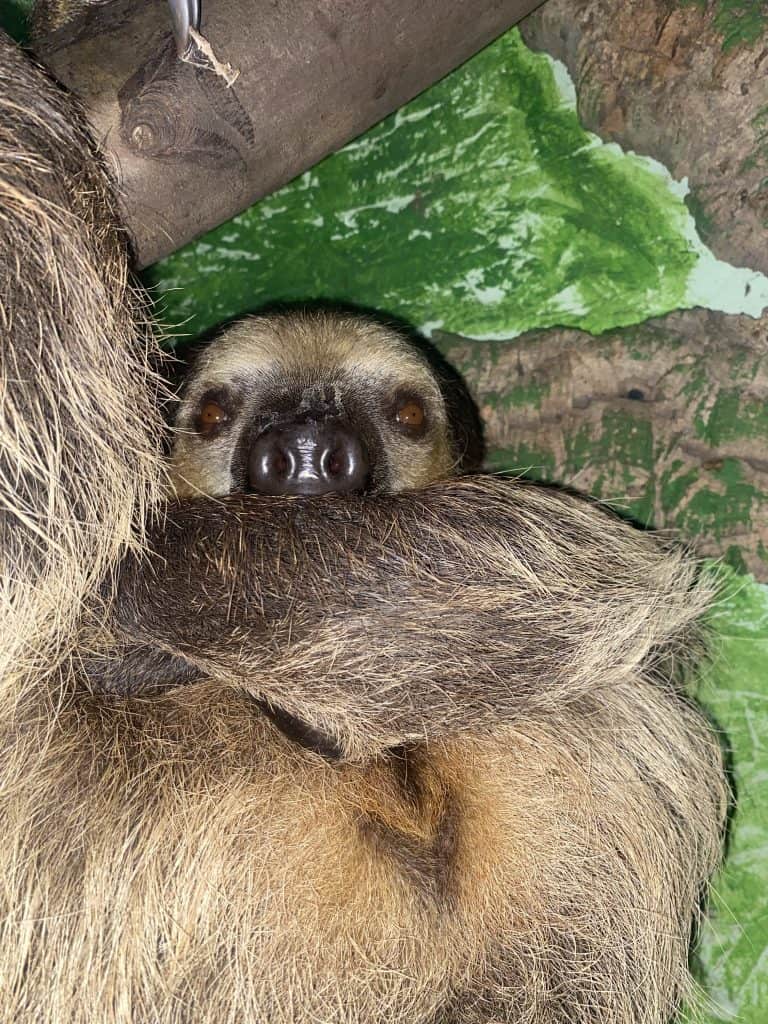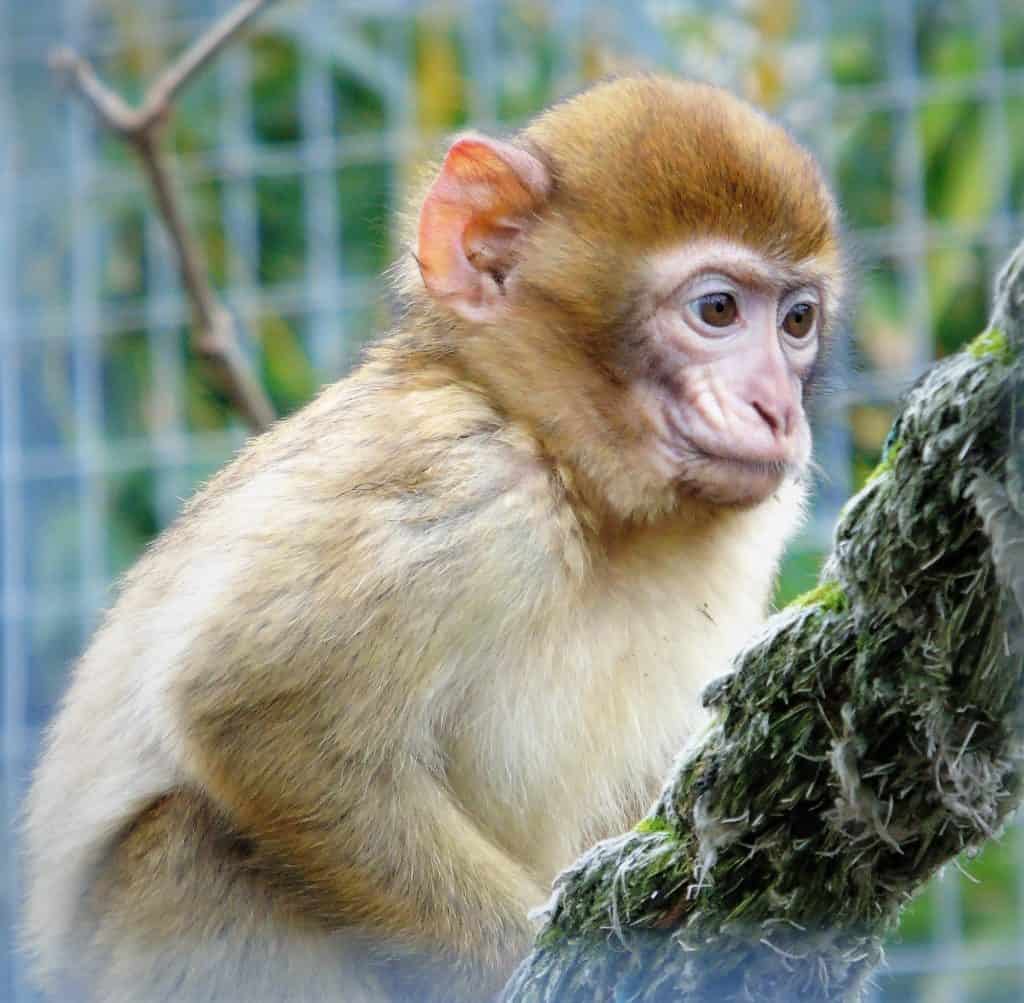Well, 2022 is almost over and what a year it’s been! From a gloomy January, through to a scorching hot summer. Now we finishing up with a very frosty winter; it’s all been going on on the Primate Section. I thought I’d use this blog as a roundup of what we’ve been up to this year.
Animal moves
Tamarins and Marmosets
If you visited the park in 2022, you will have probably noticed that the macaws and tortoises have moved. This was to make way for a brand-new outside area for our tamarins and marmosets.

You may have seen them zipping along the tunnels next to the Chimp House into their outdoors. They love to spend their time soaking up the rays and getting their vitamin D.
It’s been great for them all and we can really see a change in their behaviour. The Common Marmosets for example, used to be quite feisty towards the keepers. Now they’re much more chilled out and even take part in training sessions. The red-handed tamarins however are much more comfortable inside and rarely venture outside. Maybe they’ll get more confident by the summer!
Black-tailed Marmosets
Billy and Eve, the Black-tailed Marmosets left for pastures new in May. They went off to Hemsley Conservation Centre to start a new adventure there.

Spix Night Monkeys
Plus, you may be missing seeing our beautiful Night Monkeys in the Tropical House. They are currently off show awaiting the finishing of the brand-new Nocturnal House where they will relocate to next year.

Sloth
Very recently, we welcomed a new Sloth from Bristol Zoo. Noco is just 18 months old and settling in very well with Sid. In true sloth style however, she is incredibly lazy; she rarely moves out her nest box and has been known to go back to sleep in the middle of her breakfast!

Babies!
We were kept very busy with the pitter patter of very tiny feet throughout 2022, welcoming various babies into the world.
Barbary Macaque
Firstly, a huge surprise to us. On July 1st, we discovered a baby Barbary Macaque. The macaques have been here since 2009 having been rescued from the pet trade and have never really shown much of an interest in that area. So, it was a complete shock to find a little one clinging onto mum, Hyatt one morning. We were a bit concerned about how Dad, Momo would take to the little one as he can be quite aggressive towards the females.
However, he has been the perfect father and does his share of the work by carrying the baby around on his back lots. He seems very attentive towards her. The public got to choose her name earlier in 2022 and decided on Pip which we love as it combines her parents’ names and meanings- Momo meaning Peach and Hyatt meaning Life <3

Bushbabies
There has been a grand total of five bushbaby babies born this year. The first two in February and a further three in April and you all know how much I love a bushbaby!

Howler Monkeys
We have also welcomed a few Black Howler Monkey babies this year! Our oldest female Mila gave birth to a fluffy ball of chaos back in February. A young boy named Mali- an anagram of mum’s name. Later in the year, Mila’s daughter, Minnie also gave birth. The little one has been named Marlowe by the public, a fitting name in the keeping of ‘M’ and keeping the Canterbury connection close. Black howlers are sexually dimorphic and both sexes are born a lovely golden colour. However the males will turn completely black at around two years old.

Veterinary cases
Georgia
This year has seen us keeping the vet on his toes with call outs for various illness, ailments and routine procedures. Earlier in the year, we sedated our biggest female Chimp Georgia so we could take x-rays as her movements had started to slow down and to give her a general health check. The x-rays showed that Georgia has severe arthritis in many joints so we are now able to administer the right medication for her to ease any pain.

Contraceptive implants
We also caught up all our female night monkeys to give them microchips and contractive implants. This is that we can holt on their breeding for the time being as they have been so prolific in the past.
We have also given our three female Mandrills, Olive, Madge and Shenzi the contraceptive implant to prevent any inbreeding within the group.
Our youngest ring-tailed lemur, Flo also received the implant. She has now reached sexual maturity at 3 years old and we definitely don’t want her breeding with her dad, Alex. Lemurs are only fertile for around 24-36 hours of a whole year in which after a pregnancy of around 135 days, they will give birth to one or two infants. You will also only ever find one male within a troop of ring tails. With others patrolling the peripheral awaiting their turn to take over as the breeding male.

Keeper’s work
As well as being professional pooper-scoopers, chefs, toy makers, record keepers, furniture builders and general cleaners, we have also assigned all the primate keepers’ additional tasks to hopefully make theirs and the animals’ days more enjoyable.
Enclosure redesigning
In 2022 each keeper chose an enclosure to give a revamp to. This means they must research their chosen species to get to know more about their natural behaviours, eating habits, preferred nesting place, anything like that and almost redesign that enclosure. Obviously, we can’t do too much structurally ourselves. However, internally, I’m hoping for new furniture, branches, enrichment ideas, nest boxes. Anything like that can be stimulating for the animal and keeps everyone interested in their work. So, keep your eyes peeled for some changes to the enclosures soon.
Training
Our keepers have also been designated a particular species to work with in terms of training, which is having varying degrees of success. Most of our aims are to get each animal comfortable with being target trained. This is so that we can move them around the enclosure as necessary.
- Crate trained; so they will be happy to go into a crate for moving. Preventing them from going through the stress of being caught with a net.
- Presenting body parts; this allows us to check for injuries and general health care and will also lead onto the next step which would be injection training.
- Injection training; which is an incredibly useful tool as again, it alleviates the stress of having to get darted.
Most of our apes are now comfortable with injection training. So far the Mandrills will be separated off from each other and are starting to give the correct hands when asked.
The Colobus Monkeys will let us shut them in the house at night (most of the time). They have even started sitting on the scales. The Squirrel Monkeys are very close to going into their crate comfortably and we can weigh the Goeldi Monkeys each time we ask.
The Howler Monkeys are a little slower off the mark but are getting the gist of touching the target as 2022 comes to an end. We have even managed to work on getting the Chimps separated into designated bedrooms. this will help with any future sedations. Plus, little Elizabeth now has her own bedroom for breakfast and has learnt nearly all of her training commands. What a superstar!
See you in 2023

Phew, I think that about sums up 2022, I can’t wait to see what 2023 brings to us all! Merry Christmas everyone and happy new year!


